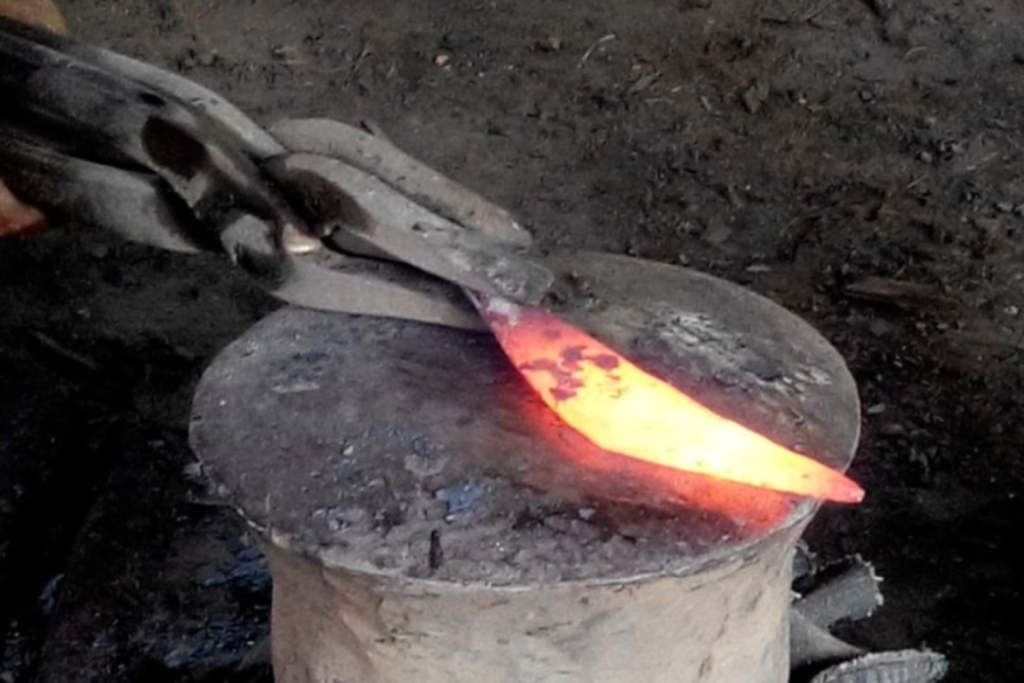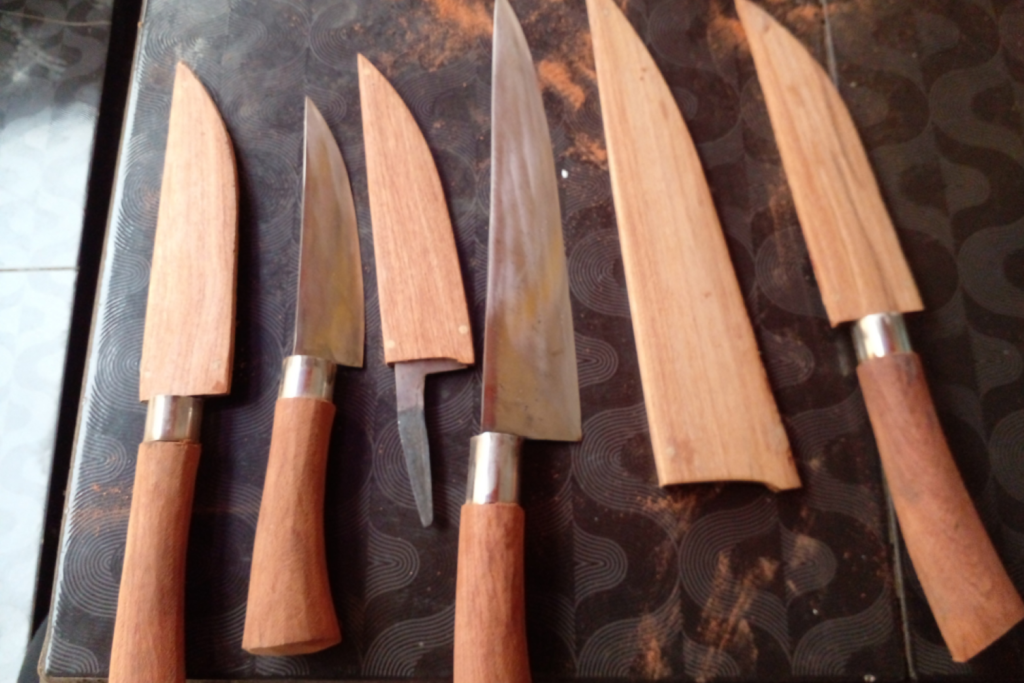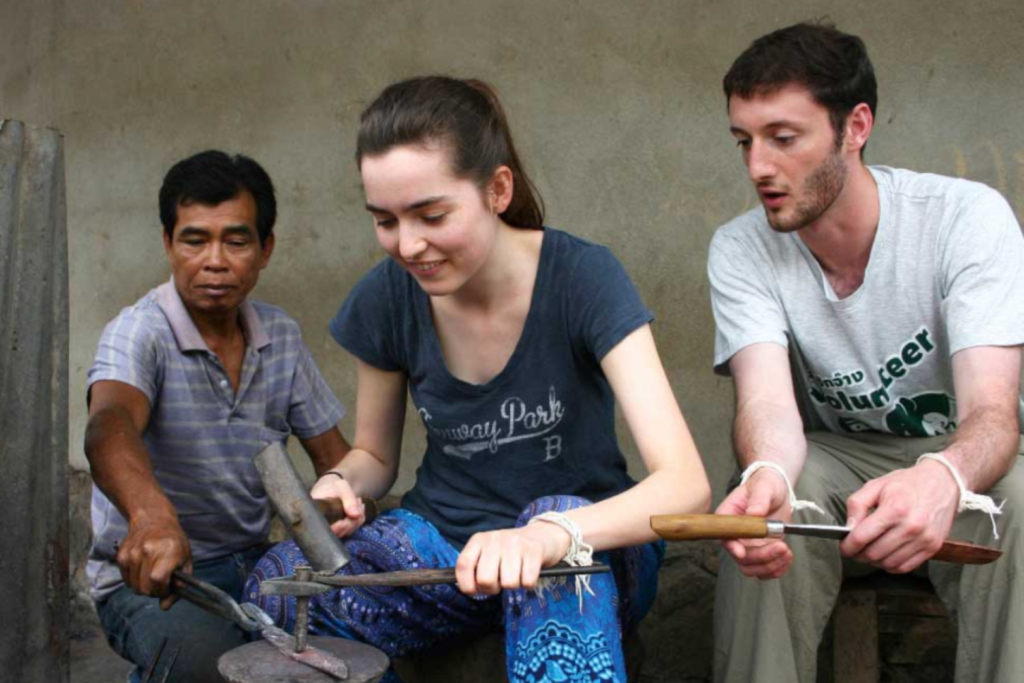Laos is a country rich in culture and diversity, with 49 officially recognized ethnic groups, each with their own unique traditions and crafts. One of the most fascinating and ancient crafts in Laos is blacksmithing, the art of forging metal into tools, weapons, and ornaments. Blacksmithing has been practiced in Laos for centuries, and is still alive today in some villages and communities.
One of the places where blacksmithing is still practiced is Ban Hat Hien, a village near Luang Prabang, the former royal capital of Laos. Ban Hat Hien is known as the village of the blacksmiths, as it specializes in the production of machetes, which are essential tools for every Lao farmer. The machetes are made from steel, which according to a local legend, was originally made from bombs and other remnants of the war that ravaged Laos in the past. Today, the steel is imported from China or Vietnam, the blacksmiths still use traditional methods and techniques to shape and sharpen the blades.
The machetes come in different shapes, sizes, and weights, and can be customized with cases and decorations. The blacksmiths work without any protection, such as gloves or goggles, and use simple tools, such as hammers, anvils, tongs, and bellows. The process of making a machete involves heating the steel in a charcoal fire until it glows red, then hammering it on an anvil to form the blade. The blade is then quenched in water to harden it, and sharpened on a grinding stone. The handle is made from wood or horn, and attached to the blade with nails or rivets. The case is traditionally made from leather or fabric, and decorated with beads or embroidery.
Another ethnic group that is known for their blacksmithing skills is the Hmong, who live in the mountainous regions of northern Laos. The Hmong are one of the largest and most diverse ethnic groups in Laos, with many subgroups and dialects. They have a long history of resistance and migration, and have preserved their distinct culture and identity. The Hmong are famous for their colorful textiles and embroidery, but they also have a tradition of making knives and other metal objects. The Hmong blacksmiths use scrap metal, such as car parts or pipes, to make their knives. They also use charcoal fires, hammers, anvils, tongs, and bellows to forge the metal into blades. The blades are then polished and sharpened on a grinding stone. The handles are made from wood or horn, and decorated with silver or brass fittings. The cases are made from leather or fabric, and embellished with beads or embroidery. The knives are used for various purposes, such as hunting, farming, cooking, or self-defense.
Blacksmithing is not only a craft, but also a cultural heritage of Laos. It reflects the history, diversity, creativity, and resilience of the Lao people. Blacksmithing is also a source of income and livelihood for some communities that still practice it today. However, blacksmithing faces many challenges and threats in the modern world. The competition from cheap imported products, the loss of skills and knowledge among younger generations, the lack of support and recognition from the government and society, and the environmental impact of charcoal production are some of the issues that affect blacksmithing in Laos.
You can visit the blacksmith and make your own knife. It’s perfect for small groups. Tiger Trail can pick up up and take you to the village where you have an English translator as you craft your own knife.




